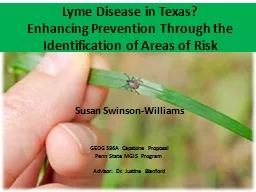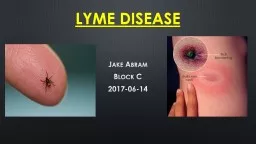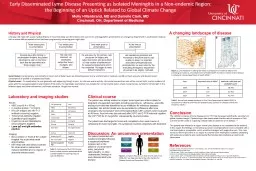PPT-Climate change speeding up the spread of Lyme disease
Author : marina-yarberry | Published Date : 2018-09-21
Katharine Walter is a graduate student in the Department of Epidemiology of Microbial Diseases at Yale University A deer tick resting on a blade of grass Immature
Presentation Embed Code
Download Presentation
Download Presentation The PPT/PDF document "Climate change speeding up the spread of..." is the property of its rightful owner. Permission is granted to download and print the materials on this website for personal, non-commercial use only, and to display it on your personal computer provided you do not modify the materials and that you retain all copyright notices contained in the materials. By downloading content from our website, you accept the terms of this agreement.
Climate change speeding up the spread of Lyme disease: Transcript
Download Rules Of Document
"Climate change speeding up the spread of Lyme disease"The content belongs to its owner. You may download and print it for personal use, without modification, and keep all copyright notices. By downloading, you agree to these terms.
Related Documents














